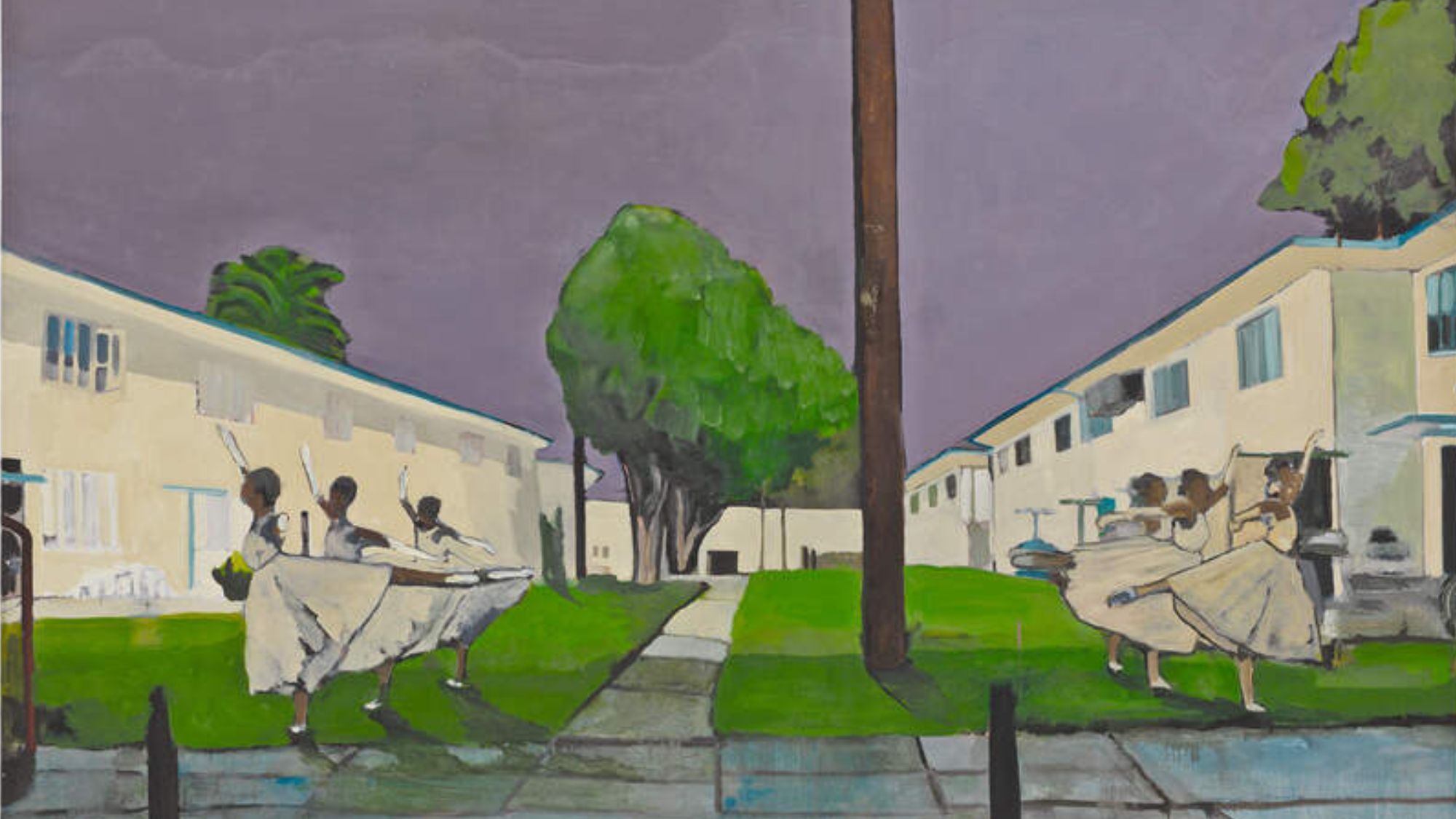Noah Davis: a 'spellbinding, spine-tingling' posthumous exhibition
Retrospective traces the 'all-too-brief career' of contemporary artist

Noah Davis's death from cancer in 2015, aged only 32, was "a terrible loss to contemporary art", said Laura Cumming in The Observer.
Based in Los Angeles, he was a pioneering painter who left behind a young family, and an extraordinary body of work, which focused on black life in America. The Barbican's "spacious and loving retrospective" traces Davis's all-too-brief career via 50 of his paintings, most of which he produced over a mere eight years. Davis's work is "steeped in art history"; it shows the influence of everyone from Matisse and Manet to Mondrian and Rothko. But what characterises it is a level of "honesty and heartfelt sincerity" that is rare in 21st century art. Whether Davis is looking at the city at night, his family at different stages, or a flea market trove of other people's family photos from the 1970s, he loves what he is looking at. This is a "beautiful" exhibition and a testament to the artist's unique vision.
The son of a lawyer, Davis was born in Seattle, but spent much of his adult life in LA, said Jackie Wullschläger in the Financial Times. In works of "haunting loveliness" that were often based on photographs, he repeatedly "memorialised" the city. He produced cityscapes and depictions of ordinary people framed by LA's distinctive architecture, but specialised in "deeply considered portrayals of the unspectacular everyday", which he endowed with "iconic" or faintly mystical qualities.
The Week
Escape your echo chamber. Get the facts behind the news, plus analysis from multiple perspectives.

Sign up for The Week's Free Newsletters
From our morning news briefing to a weekly Good News Newsletter, get the best of The Week delivered directly to your inbox.
From our morning news briefing to a weekly Good News Newsletter, get the best of The Week delivered directly to your inbox.
One "characteristically moody, slightly blurry composition" features his wife, the artist Karon Davis, posing as the goddess Isis "in the yard of a white wooden Los Angeles home". In his "Pueblo del Rio" series, he reimagines a modernist inner-city housing estate as "an enchanted arena for art and music". In one case, "spotlit buildings" become a stage for "rhythmic black dancers in white tutus": it is like a scene immortalised by Degas "transmuted to LA". A decade on from his death, "it is clear that no American figurative painter of his generation" matches his virtuosity, humanity and vision.
In his work, Davis avoided "the clichés" associated with the black American experience, said Alastair Sooke in The Telegraph. He depicted black people in everyday scenarios (whether splashing around in a local pool, or walking down a street lost in thought). His palette tends to be "muted and bruise-like", the mood "otherworldly, sombre" – particularly in his more personal canvases. "Painting for My Dad" (2011), which he created in response to his father's terminal cancer diagnosis, shows "a hunched black figure ... contemplating an abyss beneath a starry sky". Still more heartbreaking is one of his final paintings, in which he depicts a funeral from "coffin-level", as if observing his own death. You'd have to have "a heart of stone" not to experience at least "a twinge of emotion". This is a "spellbinding, spine-tingling" exhibition. Do not miss it.
A free daily email with the biggest news stories of the day – and the best features from TheWeek.com
-
 Trump says US ‘in charge’ of Venezuela after Maduro grab
Trump says US ‘in charge’ of Venezuela after Maduro grabSpeed Read The American president claims the US will ‘run’ Venezuela for an unspecified amount of time, contradicting a statement from Secretary of State Marco Rubio
-
 Political cartoons for January 5
Political cartoons for January 5Cartoons Monday’s political cartoons include drug lords, AI consuming the news, and more
-
 Magazine printables - Dec. 12
Magazine printables - Dec. 12Puzzle and Quizzes Magazine printables - Dec. 12, 2025
-
 The ultimate films of 2025 by genre
The ultimate films of 2025 by genreThe Week Recommends From comedies to thrillers, documentaries to animations, 2025 featured some unforgettable film moments
-
 Into the Woods: a ‘hypnotic’ production
Into the Woods: a ‘hypnotic’ productionThe Week Recommends Jordan Fein’s revival of the much-loved Stephen Sondheim musical is ‘sharp, propulsive and often very funny’
-
 The best food books of 2025
The best food books of 2025The Week Recommends From mouthwatering recipes to insightful essays, these colourful books will both inspire and entertain
-
 Art that made the news in 2025
Art that made the news in 2025The Explainer From a short-lived Banksy mural to an Egyptian statue dating back three millennia
-
 Nine best TV shows of the year
Nine best TV shows of the yearThe Week Recommends From Adolescence to Amandaland
-
 Winter holidays in the snow and sun
Winter holidays in the snow and sunThe Week Recommends Escape the dark, cold days with the perfect getaway
-
 The best homes of the year
The best homes of the yearFeature Featuring a former helicopter engine repair workshop in Washington, D.C. and high-rise living in San Francisco
-
 Critics’ choice: The year’s top 10 movies
Critics’ choice: The year’s top 10 moviesFeature ‘One Battle After Another’ and ‘It Was Just an Accident’ stand out